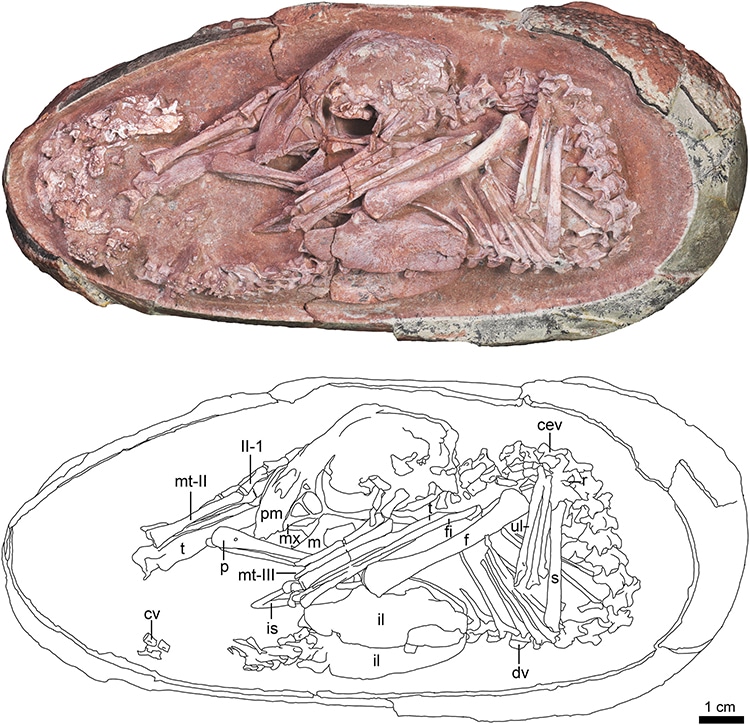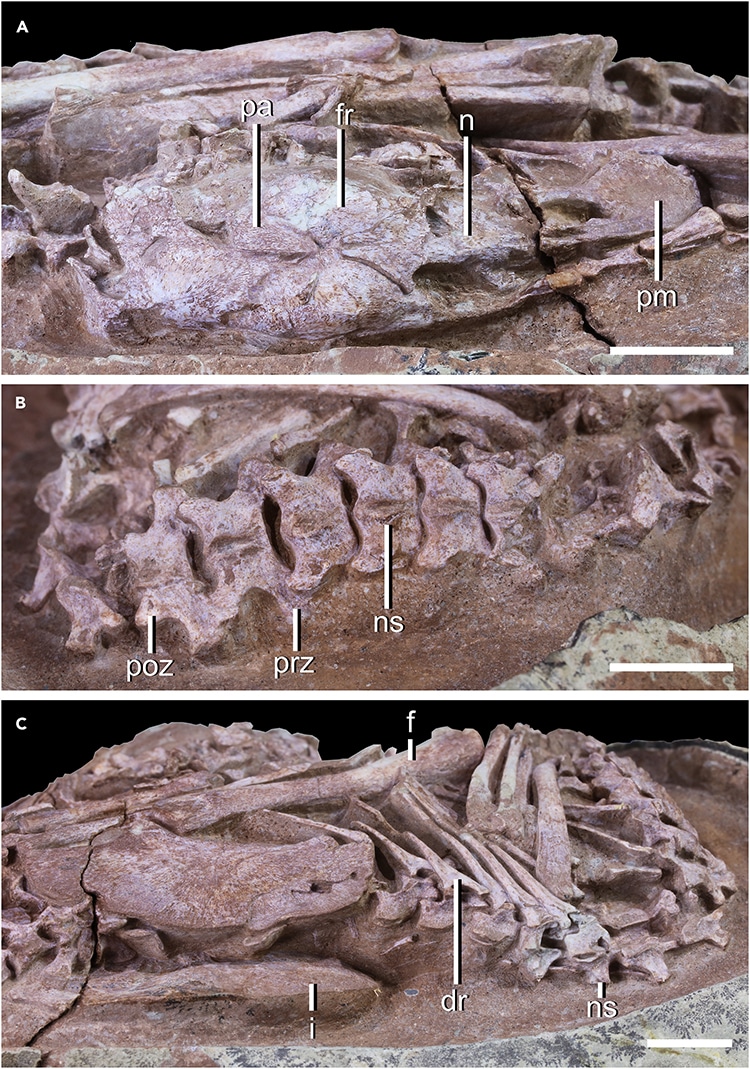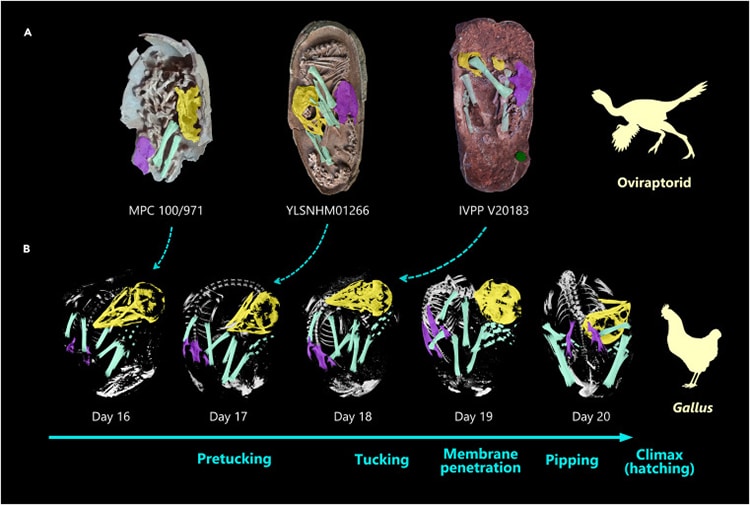66-Million-Year-Old Fossilized Dinosaur Egg Discovered With Baby Inside

The very well-preserved oviraptorosaur embryo known as Baby Yinglian. (Photo: Fig. 1/Courtesy Xing et al., 2021)
Many dinosaurs emerged into their prehistoric world from large eggs. Despite finding nests and eggshells, it is rare for scientists to discover an intact fetus. An egg discovered in 2000 languished in a Chinese museum for years before researchers discovered that it contained a rare phenomenon. Curled inside is a well-preserved skeleton of a fetal oviraptorosaur, a three-toed dinosaur with hollow bones. A paper recently published in iScience describes how the baby dino appears to demonstrate a “tucked” posture characteristic of modern hatchlings, suggesting an evolutionary connection.
The fossilized egg in question arrived at the Yingliang Stone Nature History Museum in Nan’an, China in 2000. In 2015, a researcher noticed something poking out of a crack—a tiny bone. Splitting the egg in half revealed a perfect little skeleton curled inside. Measuring 10 inches from beak to tail, the dinosaur appeared to be days from hatching as it lay in its nest anywhere from 66 million to 72 million years ago. Its oviraptorosaur parent would have sat upon the nest like a modern bird, guarding its clutch of eggs. If the egg had hatched safely, the baby—nicknamed Baby Yingliang—would have grown up to be about six feet long, with hollow bones and a powerful beak.
While it is always special to discover an embryonic dinosaur, this fossil offers a new tantalizing clue to the connections between modern birds and their dinosaur forebears. The tiny skeleton has its head tucked under its right arm. This is the first example of “tucking” seen in non-avian dinosaurs. Tucking allows baby birds to position their beaks optimally in the last few days of gestation. Once in position, they have the best shot of cracking open their eggs and emerging into the world. While many dinosaurs had soft-shelled eggs, the oviraptorosaur had a hard shell. Fion Waisum Ma—a paleontologist at the University of Birmingham and an author of the study—suggests the oviraptorosaur may have developed the “tucking” posture to better break free. While the evolutionary implications must be researched further, this exciting find offers a new theory about a well-known dinosaur.
Scientists discovered one of the best-preserved examples of a dinosaur embryo curled up in its egg.

Three views of the skeleton of the oviraptorid embryo. (Photo: Fig. 2/Courtesy Xing et al., 2021)
The fetal dino appears to be in a “tucked” posture like that of modern-day birds just before hatching.

Developmental stages of a non-avian dinosaur compared to a domestic rooster. (Photo: Fig. 3/Courtesy Xing et al., 2021)
h/t: [IFL Science, Today]
Related Articles:
Interactive Map Reveals Which Dinosaurs Roamed Your Hometown Millions of Years Ago
Dinosaur Fossil of a Titanosaur Discovered in Argentina May Belong to the Largest Land Animal Ever
Fossil Discovery Unlocks the Mystery of What Happened the Day the Dinosaurs Died
220-Million-Year-Old Dinosaur Footprint Is Discovered by a 4-Year-Old
READ: 66-Million-Year-Old Fossilized Dinosaur Egg Discovered With Baby Inside
0 Commentaires